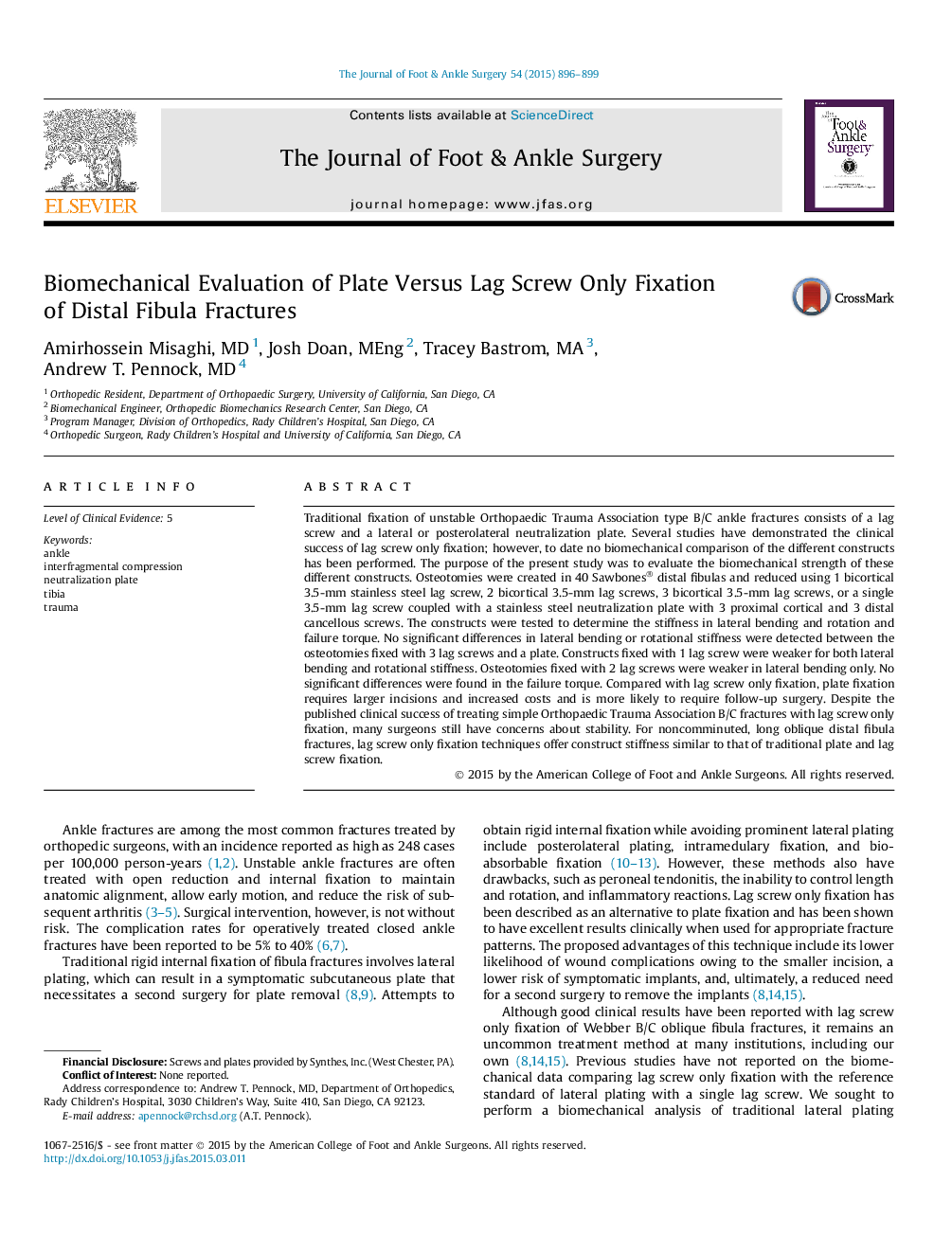| Article ID | Journal | Published Year | Pages | File Type |
|---|---|---|---|---|
| 2713012 | The Journal of Foot and Ankle Surgery | 2015 | 4 Pages |
Traditional fixation of unstable Orthopaedic Trauma Association type B/C ankle fractures consists of a lag screw and a lateral or posterolateral neutralization plate. Several studies have demonstrated the clinical success of lag screw only fixation; however, to date no biomechanical comparison of the different constructs has been performed. The purpose of the present study was to evaluate the biomechanical strength of these different constructs. Osteotomies were created in 40 Sawbones® distal fibulas and reduced using 1 bicortical 3.5-mm stainless steel lag screw, 2 bicortical 3.5-mm lag screws, 3 bicortical 3.5-mm lag screws, or a single 3.5-mm lag screw coupled with a stainless steel neutralization plate with 3 proximal cortical and 3 distal cancellous screws. The constructs were tested to determine the stiffness in lateral bending and rotation and failure torque. No significant differences in lateral bending or rotational stiffness were detected between the osteotomies fixed with 3 lag screws and a plate. Constructs fixed with 1 lag screw were weaker for both lateral bending and rotational stiffness. Osteotomies fixed with 2 lag screws were weaker in lateral bending only. No significant differences were found in the failure torque. Compared with lag screw only fixation, plate fixation requires larger incisions and increased costs and is more likely to require follow-up surgery. Despite the published clinical success of treating simple Orthopaedic Trauma Association B/C fractures with lag screw only fixation, many surgeons still have concerns about stability. For noncomminuted, long oblique distal fibula fractures, lag screw only fixation techniques offer construct stiffness similar to that of traditional plate and lag screw fixation.
